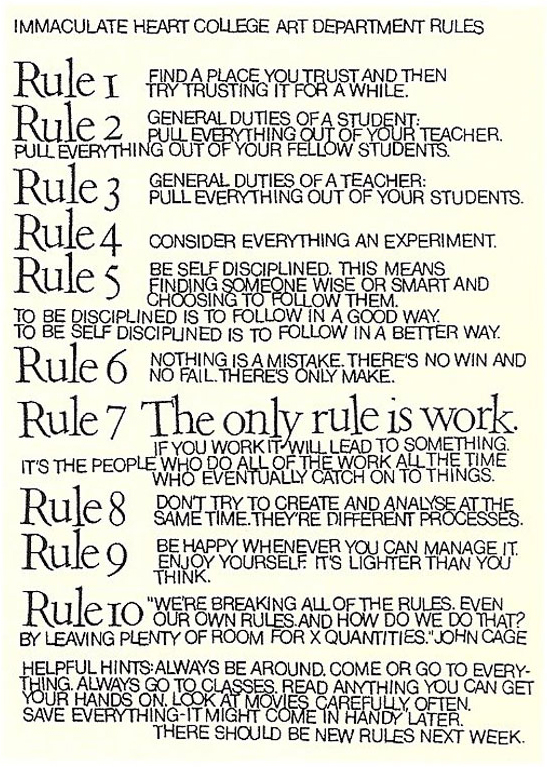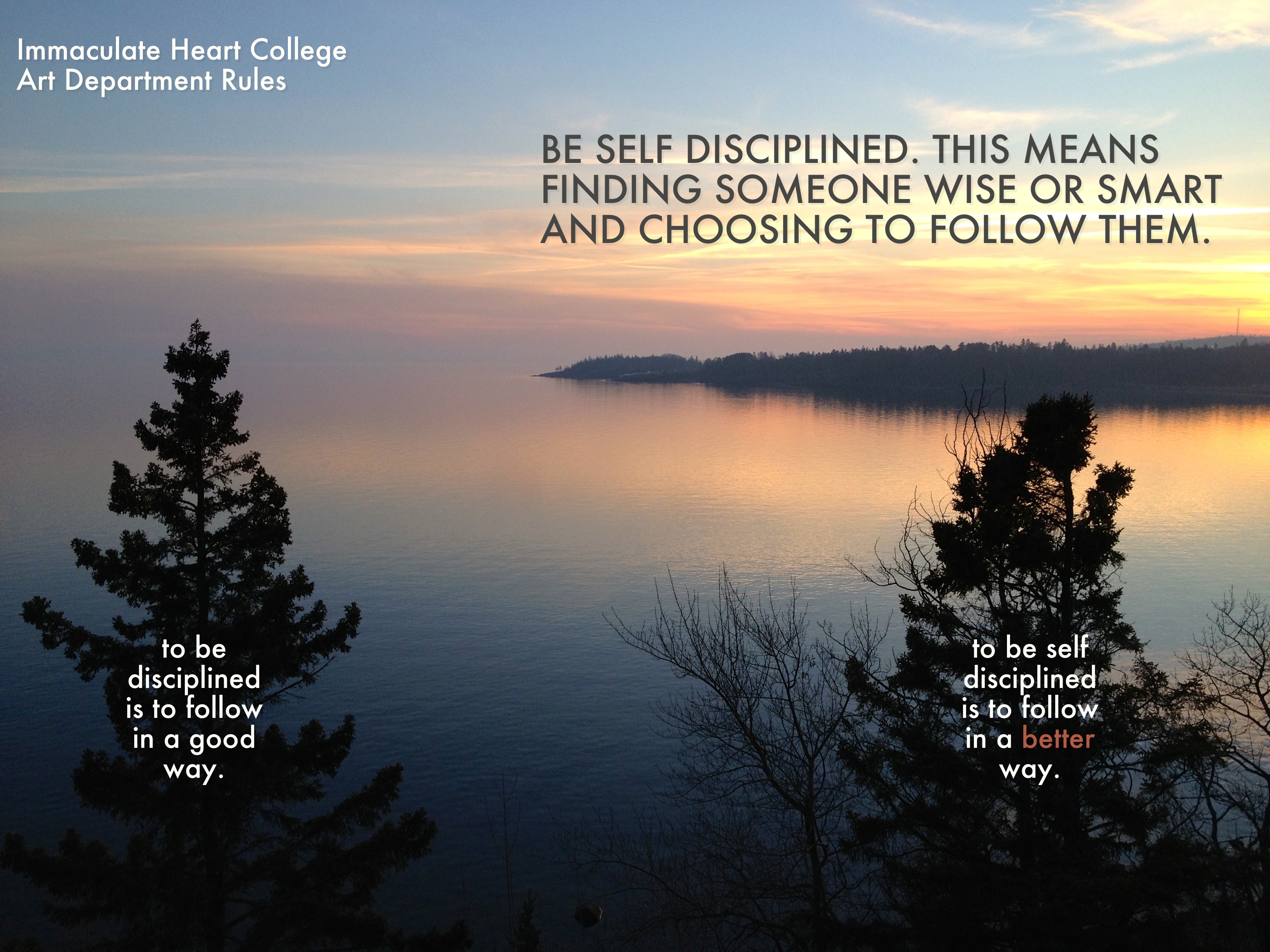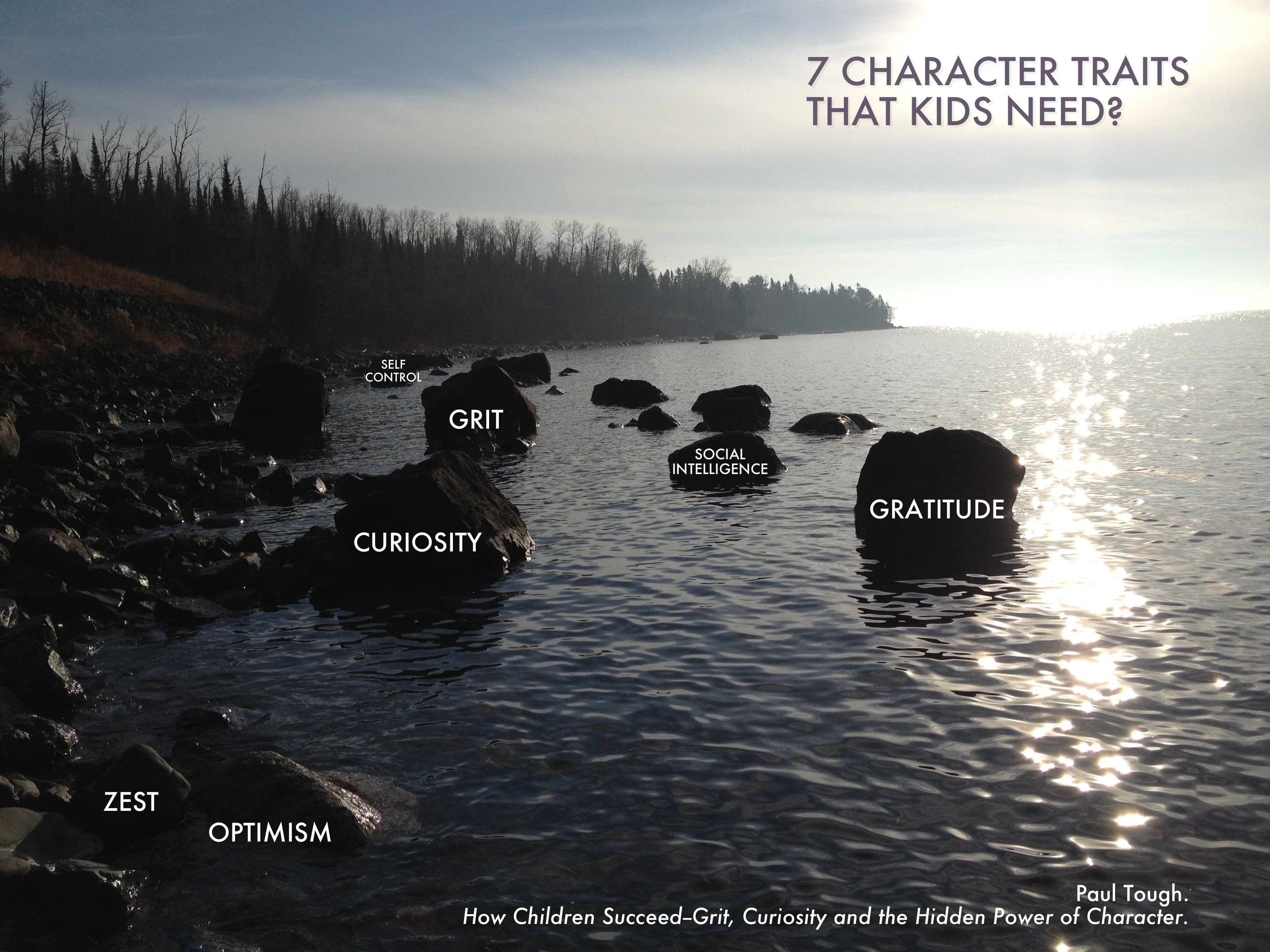This afternoon, I’ve spent a lot of time reading various accounts of what self-control is and what it does (to us). I want to put these accounts beside each other as I continue to think through why I dislike repeated calls for kids (and adults) to have more self-control. Instead of offering much of my own commentary (that might come later), I want to juxtapose these accounts as a way of posing (a) question(s) or offering an invitation to engage.
Note: These various accounts don’t all use the term self-control, some refer to self-discipline or will-power.
Account One:
Immaculate Heart College Art Department Rule 5

And, my problematizer inspired by it:
Account Two
Paul Tough on Self-Control, Grit and Conscientiousness
How Children Succeed book excerpt
Angela Duckworth, a psychologist at the University of Pennsylvania, has made it her life’s work to analyze which children succeed and why. She says she finds it useful to divide the mechanics of achievement into two separate dimensions: motivation and volition. Each one, she says, is necessary to achieve long-term goals, but neither is sufficient alone. Most of us are familiar with the experience of possessing motivation but lacking volition: You can be extremely motivated to lose weight, for example, but unless you have the volition—the willpower, the self-control—to put down the cherry Danish and pick up the free weights, you’re not going to succeed. If children are highly motivated, self-control techniques and exercises—things like learning how to distract themselves from temptations or to think about their goals abstractly—might be very helpful. But what if students just aren’t motivated to achieve the goals their teachers or parents want them to achieve? Then, Duckworth acknowledges, all the self-control tricks in the world aren’t going to help.
Account Three
Angela Duckworth’s Grit Survey:
Find out how gritty you are, @room34 sasupenn.qualtrics.com/SE/?SID=SV_06f…
— Sara Puotinen (@undisciplined) November 30, 2012
We define grit as perseverance and passion for long-term goals. Grit entails working strenuously toward challenges, maintaining effort and interest over years despite failure, adversity, and plateaus in progress. The gritty individual approaches achievement as a marathon; his or her advantage is stamina. Whereas disappointment or boredom signals to others that it is time to change trajectory and cut losses, the gritty individual stays the course.
Account Four
Sara Ahmed and the Willfulness Archive
Sweeet! I love Sara Ahmed’s work. Just found her “A Willfulness Archive” muse.jhu.edu/login?auth=0&t… Great to read beside/against self-discipline.
— Sara Puotinen (@undisciplined) November 30, 2012
“Willfulness as audacity, willfulness as standing against, willfulness as creativity” (Sara Ahmed, “The Willfulness Archives”).
— Sara Puotinen (@undisciplined) November 30, 2012
“Feminist, queer and anti-racist histories could be thought of as histories of those who are willing to be willful” (Ahmed).
— Sara Puotinen (@undisciplined) November 30, 2012
Account Four
My Thoughts on Self-Control
On Self-Control and the Trouble with Discipline, Part 1 and Part 2


